
The world of Michelin-starred dining often conjures images of rarefied ingredients, intricate techniques, and kitchens humming with an almost magical efficiency. For many home cooks, the idea of bringing that level of culinary prowess into their own space seems like a distant dream, reserved only for professional chefs. However, what if we told you that the secret to unlocking a more professional, enjoyable, and efficient home kitchen isn’t about expensive commercial gadgets or obscure ingredients, but rather a collection of surprisingly simple, yet profoundly impactful, hacks championed by some of the most celebrated names in the culinary world?
Indeed, the practices that make a professional kitchen thrive—structure, cleanliness, and a precise order of operations—are not exclusive to high-end restaurants. Adopting these very principles at home can revolutionize your cooking, granting you more space for creativity and enabling you to truly hone your craft. This transformation doesn’t demand a complete overhaul or a hefty investment; instead, it hinges on a handful of smart tricks, many of which cost next to nothing, turning cooking from a mundane chore into an exciting experiment. We’ve gathered insights from an incredible lineup of celebrity chefs, including JJ Johnson, Angie Mar, Kyle Connaughton, Jeff Ramsey, Antonia Lofaso, and Sarah Thompson, who shared their invaluable tips for imbuing home kitchens with that elusive professional touch, all before their participation in the highly anticipated Revelry Culinary Weekend 2025.
These expert home cooking tips offer a rare glimpse into the methodologies that empower these seasoned chefs to serve countless guests with speed, precision, and efficiency. It’s a testament to the fact that often, it is the small, precise details that make all the difference, elevating a meal from a hurried obligation into a dish you can genuinely be proud of. Prepare to discover how these culinary masters approach their craft, and how you can seamlessly integrate their wisdom into your own daily cooking routine, transforming your kitchen into a haven of efficiency and delicious creation.

1. **Mastering Mise en Place: The Foundation of Culinary Order** Clutter, as any seasoned chef will tell you, is a recipe for disaster. This holds true for any creative endeavor, but especially so in the dynamic environment of a kitchen. Chef JJ Johnson, a true advocate for organized efficiency, encapsulates this philosophy perfectly, stating, “My best tip is to focus on getting organized. In a professional kitchen, we call it mise en place, which is French for ‘everything in its place.'” This isn’t just a fancy phrase; it’s the very bedrock upon which culinary success is built, ensuring every component is at your fingertips when the cooking begins.
While “mise en place” might sound like an intricate technique reserved for the most skilled culinary artists, its essence is remarkably simple and universally applicable. It’s a non-negotiable concept in every commercial kitchen, yet it’s surprisingly easy to overlook in the hurried pace of home cooking. Johnson elaborates on its straightforward execution, explaining, “It’s about taking a few minutes before you start cooking to chop all your vegetables, measure out your spices, and get all your tools ready.” This preparatory ritual actively reduces chaos and mess, fostering a more serene and enjoyable cooking experience.
The benefits extend far beyond mere tidiness. By embracing mise en place, you’ll find yourself working “faster, more efficient, and you’ll actually enjoy cooking more,” according to Johnson. Chef Angie Mar wholeheartedly seconds this crucial pre-cooking ritual, further emphasizing the importance of dating and labeling ingredients—a standard practice in professional kitchens. Imagine a refrigerator where every fruit, vegetable, meat, or spice is meticulously cleaned, labeled, and stored in clear, airtight, and preferably stackable containers, all rotated to ensure peak freshness and maximum efficiency. This disciplined approach eliminates guesswork and empowers you to cook with confidence and speed.
Read more about: The Golden Age of Chrome and Power: 15 Iconic American Cars That Defined the 1950s

2. **Strategic Staple Stocking & Smart Long-Term Storage** Unlike the ever-evolving menus of a restaurant, which frequently introduce new seasonal ingredients, our home kitchens often revolve around a familiar cast of ingredients and beloved recipes. We are, after all, creatures of habit, tending to revisit our favorite weeknight meals time and again. This predictability, however, can be a distinct advantage. By identifying the types of meals you regularly cook and the ingredients you rely on almost daily, you can proactively stock up, ensuring you always have precisely what you need, exactly when you need it, avoiding those last-minute dashes to the grocery store.
One of the most transformative investments for any home cook serious about efficiency and variety is a chest freezer. This often-underestimated appliance acts as an absolute game-changer, allowing you to stock up on and freeze an abundance of perishable foods, opening up a plethora of recipe possibilities. Whether it’s frequently used vegetables, your preferred cuts of meat, or homemade soup stocks, a well-stocked chest freezer provides unparalleled culinary flexibility. Just remember to keep it impeccably organized with built-in shelves or baskets, diligently applying the professional kitchen’s labeling and dating techniques we discussed earlier to maintain freshness and easy accessibility.
Chef Angie Mar, ever the expert in sophisticated storage, also champions the utility of larders—those wonderfully cool, dark pantries—for the long-term preservation of essential staples in a home kitchen. Mar reveals a particularly clever method: she prepares and then wraps or Cryovacs items like fats, compound butters, and base sauces into small, single- or double-serving portions. This foresight means that “if I am in a pinch, or even just have a craving for something delicious, all the best ingredients are at my fingertips when the moment strikes me to cook,” illustrating the profound convenience and culinary freedom that thoughtful storage can bring.
Read more about: Maximize Your Savings Effortlessly: The Insider’s Guide to Stop & Shop’s Digital Coupon Revolution

3. **Precision Through Weight Measurement: Elevating Your Accuracy** For many cooks in the United States, the familiar rhythm of measuring ingredients often involves cups and spoons. Yet, what many might not realize is that culinary professionals and home cooks in most other parts of the world approach measurements with a vastly different, and arguably more accurate, philosophy. The truth is, relying solely on volumetric measurements like cups and spoons isn’t the most precise method for quantifying ingredients, and while slight disparities might not critically impact certain dishes, for others, precision is paramount.
This becomes particularly evident in the delicate art of baking, where using cups and spoons is frequently cited as one of the biggest baking mistakes home cooks often make, possessing the potential to completely derail more intricate recipes. Imagine the nuanced balance required for a perfectly emulsified sauce or a finely tuned spice blend; in such cases, even minor inconsistencies in ingredient quantities can noticeably alter the final product. The quest for repeatable excellence demands a different approach, one that minimizes variables and maximizes consistency.
Chef Kyle Connaughton, renowned for his meticulous approach, strongly advocates for ditching cups and teaspoons in home cooking in favor of scales and weight measurements to achieve far more precise and consistent results. He unequivocally states, “Recipes that include weights… are so much more accurate and easy to replicate.” Indeed, at his acclaimed restaurant, SingleThread, Connaughton confirms, “all of our recipes use weights and we never use cups or any sort of volumetric measurement.” To embrace this superior method, you simply need a quality kitchen scale that measures to the tenth of a gram, along with stable cups and bowls that fit securely on its surface. While many U.S. recipes still use volumetric measurements, incorporating European recipes into your routine can swiftly help you master the art of weight measurement, unlocking a new level of culinary control.
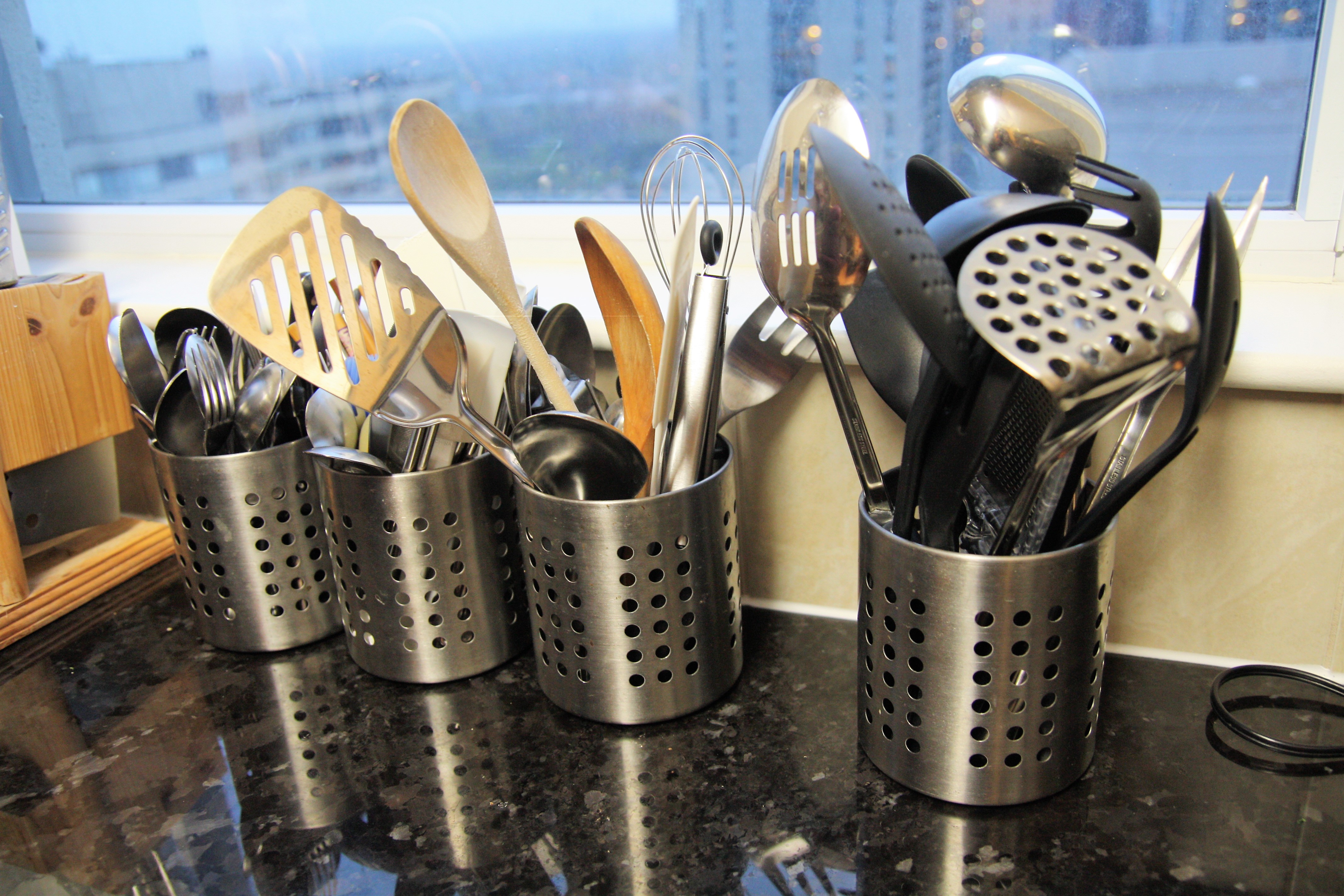
4. **Investing in Foundational High-Quality Tools: Less is More** A persistent myth surrounding high-end commercial kitchens is that they are overflowing with every conceivable gadget, no matter how specialized or obscure. However, the reality championed by top chefs is far more practical: an astonishing array of exquisite recipes can be crafted with a surprisingly small collection of tools. What truly distinguishes a professional kitchen isn’t the sheer volume of equipment, but rather the uncompromising durability and exceptional quality of a select few essential implements. This principle encourages thoughtful investment over indiscriminate accumulation, focusing on tools that perform flawlessly and stand the test of time.
Chef Kyle Connaughton succinctly outlines these indispensable items, emphasizing that “Good cutting boards, good (sharp) knives, and good pots and pans are essential.” Beyond these basics, he also underscores the critical importance of owning a high-quality oven capable of cooking to accurate, even temperatures. He brings a crucial point to light by noting that even some commercial ovens can be off by more than 25 degrees Fahrenheit, highlighting how fundamental precise temperature control is to consistent culinary outcomes. Such attention to detail in your equipment translates directly into superior results on your plate.
Further reinforcing the importance of quality, Chef Sarah Thompson champions the belief that “a good knife is the secret to a kitchen that runs like a well-oiled machine.” She advises, “It should be sharp, comfortable in your hand, and the right weight and length. No need to purchase a block of knives; one good knife will accomplish what you need.” Chef Antonia Lofaso expands on this, suggesting that while a good knife is vital, a “well-organized refrigerator with proper compartments helps reduce food waste and keeps you in the right mindset.” Her ultimate advice for those serious about professional-level home cooking is clear: “start with high-end appliances and durable tools. Invest in your kitchen, and you’re really investing in yourself.”

5. **Optimizing Kitchen Layout for Entertaining: A Welcoming Culinary Hub** When we design our home kitchens, the primary focus often revolves around our personal comfort and cooking preferences. Yet, it’s all too easy to inadvertently overlook a crucial aspect: the experience of entertaining guests. While creating a cozy and functional space for your own enjoyment is paramount, equally important is ensuring that your friends and family feel genuinely comfortable and welcomed, with ample opportunities to relax, socialize, and perhaps even enthusiastically lend a hand in preparing a shared meal. A kitchen that invites participation and communal enjoyment truly elevates the dining experience.
Chef Jeff Ramsey offers an astute piece of advice for fostering such an environment: “Invest in a good kitchen island with ample seating.” If your space allows, a thoughtfully chosen kitchen island can be a magnificent way to make guests feel immediately at home. Ramsey highlights its dual appeal, noting, “Not only can it be a beautiful statement piece to any kitchen, but it can also be a gathering place for friends and family to create memories.” This central hub transforms the kitchen from a mere workspace into the vibrant heart of your home, where culinary creations and cherished moments intertwine effortlessly.
For those whose kitchens might not accommodate a grand island, there are still wonderful ways to cultivate a welcoming atmosphere. Ramsey suggests ensuring you “have enough cozy chairs at a small breakfast nook in your kitchen.” The key, he implies, lies in intentional hospitality. Keeping the table dressed and stocked with everything your guests might need to comfortably enjoy a delicious homemade meal—whether it’s condiments, extra napkins, or a carafe of water—demonstrates thoughtfulness and makes every gathering feel special and effortlessly elegant.
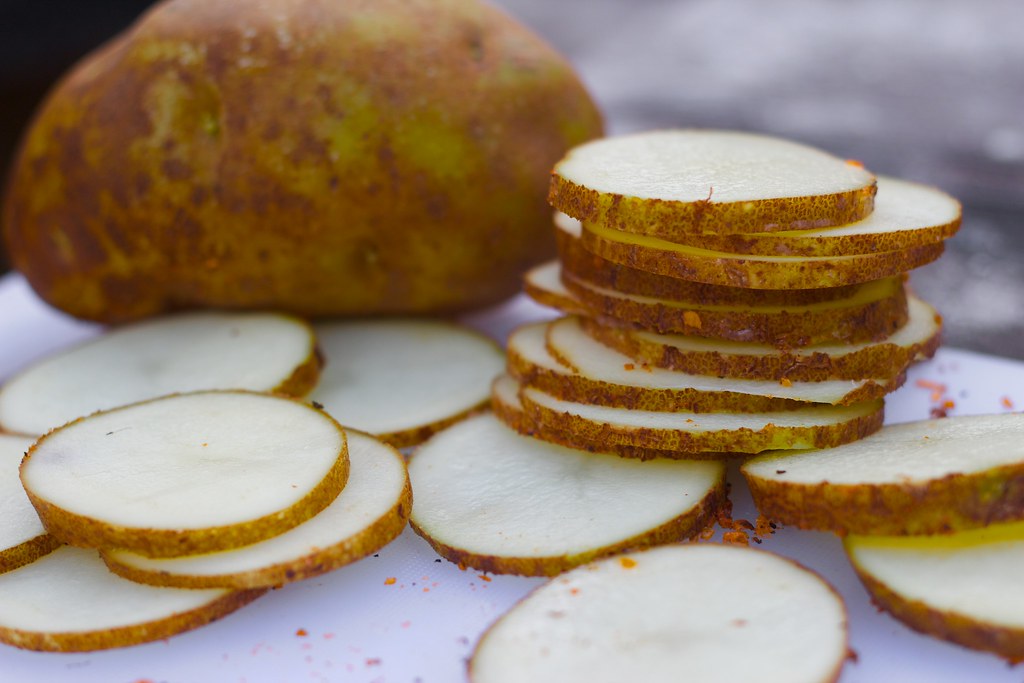
6. **The Cold Water Potato Start: A Ramsay Revelation for Perfection** Gordon Ramsay, a name synonymous with culinary excellence and exacting standards, offers a deceptively simple yet profoundly effective trick when preparing potatoes. Whether your goal is to achieve the ideal texture for perfectly roasted potatoes through a part-boil, or to craft light and fluffy mashed potatoes, Ramsay’s first step is counter-intuitive to many home cooks: he suggests always starting them in cold water. This approach may seem minor, but it underpins a significant difference in the final quality of your potato dishes, setting the stage for culinary success right from the beginning.
The genius behind “leaving the kettle alone” and opting for cold water lies in the physics of cooking. By gradually bringing the potatoes up to temperature, the center of the potato has ample time to cook thoroughly without the outside becoming overcooked and falling apart. This gentle, even heating process also plays a critical role in preserving the potato’s integrity. It ensures that the starch within the potato won’t become mushy and soggy, a common pitfall when potatoes are abruptly introduced to rapidly boiling water, which can scald the outer layers before the core is tender.
This seemingly small adjustment yields remarkable results, contributing to potatoes that are uniformly cooked, possess a superior texture, and hold their shape beautifully, whether they are destined for a crispy roast or a velvety mash. It’s a prime example of how a precise, deliberate technique, even at the most basic stage of preparation, can profoundly impact the overall quality of a dish. Embracing this Ramsay-approved method ensures your potatoes are always cooked to perfection, a testament to the power of understanding ingredient properties.
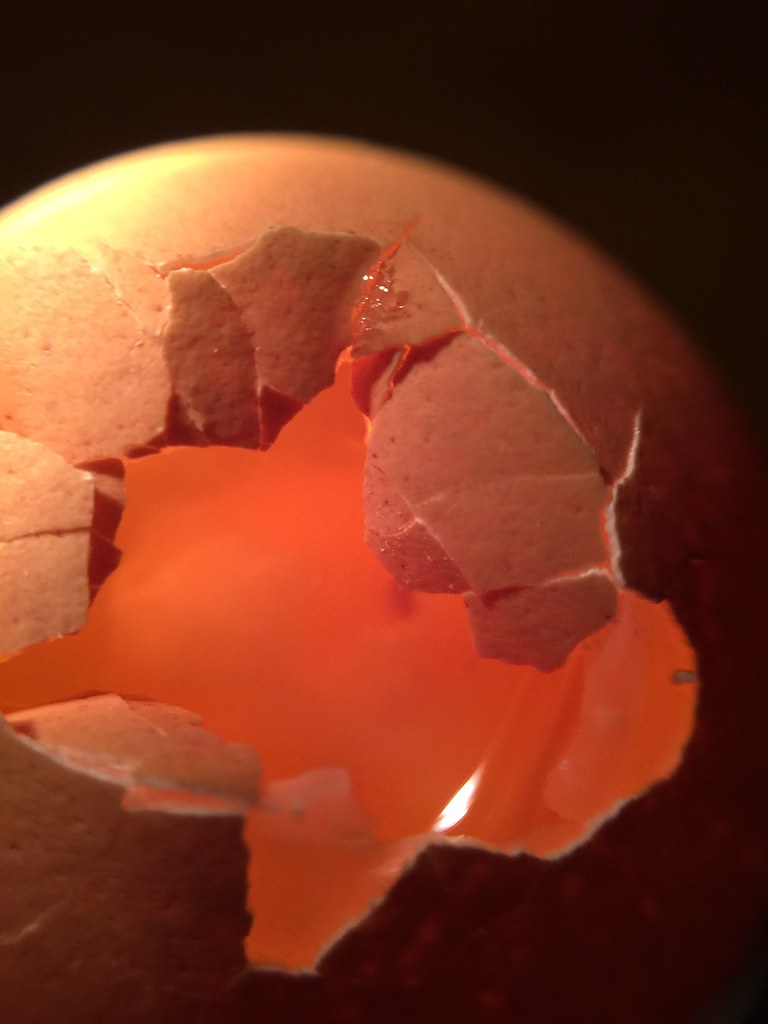
7. **Flat Surface Egg Cracking Technique: Eliminating Shell Surprises** Cracking an egg, a seemingly routine kitchen task, is an area where almost everyone develops their own personal technique. From sharp countertop edges to gentle taps, the methods vary widely. However, Gordon Ramsay, with his characteristic precision, offers what he considers the definitive answer to this fundamental action, aiming to eliminate one of the most common and annoying kitchen mishaps: stray eggshell fragments finding their way into your delicate mixtures. His advice simplifies the process, ensuring a cleaner, more efficient preparation of your eggy creations.
Ramsay’s crucial piece of advice is refreshingly straightforward: “don’t be tempted to go for that sharp edge instead, always crack it on a flat surface.” This recommendation steers clear of the traditional approach many home cooks might instinctively reach for. The allure of a sharp edge to quickly break the shell is often strong, but it frequently leads to undesirable consequences that can be easily avoided with a slight adjustment in technique.
By consistently using a flat worktop for cracking eggs, you significantly reduce the likelihood of shell fragments being pushed inward and becoming embedded in the egg. This method minimizes the chances of any unwanted shell bits getting “thrown inside the egg,” as Ramsay describes. Furthermore, any small pieces that do break off are much more likely to remain on the exterior of the shell or on the flat surface, making them far easier to spot and remove before they disappear into your omelet, batter, or custard, ensuring a perfectly smooth and shell-free consistency every time.
Diving deeper into the treasure trove of culinary wisdom, we continue our exploration of expert techniques and the profound philosophies that transform ordinary home kitchens into havens of efficiency and exquisite taste. Moving beyond foundational principles, we now turn our attention to more nuanced ingredient-specific handling from a legendary figure, alongside the overarching ethos of simplicity that defines Michelin-starred excellence. These insights are not just about cooking; they’re about cultivating a mindful, joyful, and ultimately more delicious relationship with food.
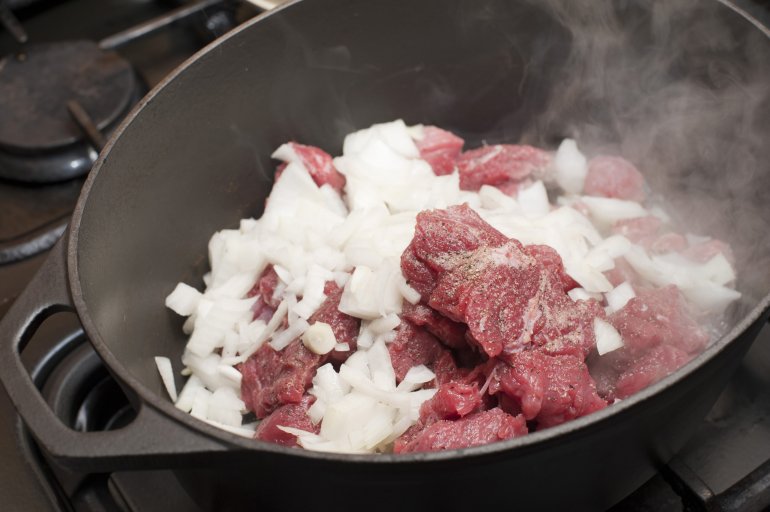
8. **Preparing Your Meat for Optimal Cooking: The Room Temperature Revelation** Anyone who has ever cut into a beautifully seared steak, only to find the center unexpectedly cold or unevenly cooked, understands the frustration of inconsistent results. Gordon Ramsay, a chef whose name is synonymous with precision, offers a surprisingly simple yet profoundly effective step that can elevate any meat dish from satisfactory to truly sublime: bringing your protein up to room temperature before cooking. This isn’t just a recommendation; it’s a foundational principle in professional kitchens that promises more predictable and delicious outcomes.
The genius of this technique lies in its ability to promote uniform cooking. When meat goes directly from the cold refrigerator into a hot pan or oven, the intense heat can cause the exterior to cook rapidly, even charring, while the interior struggles to catch up, often remaining undercooked or unevenly heated. By allowing your protein to gradually reach room temperature, you significantly reduce the thermal shock, enabling the heat to penetrate more evenly throughout the cut. This meticulous pre-planning step sets the stage for a perfectly cooked piece of meat, whether you’re aiming for a tender roast or a juicy steak.
Of course, this method requires a touch of foresight and a small amount of pre-planning. Depending on the size and thickness of the cut, this could mean taking your steak or chicken out of the fridge anywhere from 30 minutes to an hour (or even more for larger roasts) before you intend to cook it. This small investment of time before the cooking process begins pays dividends in the form of a consistently cooked, succulent, and utterly satisfying final product. It’s a testament to how often the most impactful culinary secrets are found in the simplest, yet most deliberate, preparatory steps.
Read more about: From Ancient Roots to Global Culinary Dominance: The Enduring Business Acumen and Market Vitality of Pizza, Led by Industry Innovators Like Pizza Hut

9. **The Salt-Assisted Garlic Mince: A Time-Saving, Flavor-Boosting Trick** Mincing garlic is an almost universal kitchen task, yet it often comes with its own set of minor annoyances: the stubborn peel, the sticky pulp adhering to your knife, and the persistent aroma clinging to your fingertips for hours. For many home cooks, it’s a necessary evil rather than an enjoyable part of the cooking process. Leave it to Gordon Ramsay to present a straightforward hack that not only makes mincing garlic significantly easier but also enhances the overall flavor extraction, transforming a fiddly chore into a seamless experience.
Ramsay’s ingenious solution is remarkably simple: the addition of coarse salt. This isn’t merely for seasoning; the coarse granules act as an abrasive agent, working synergistically with your knife to break down the tough cell walls and fibers of the garlic. By sprinkling a pinch of coarse salt onto your peeled garlic cloves before mincing, you create a natural cutting aid that helps to pulverize the garlic more efficiently and uniformly. This practical application of basic physics not only speeds up the process but also creates a finer, more consistent mince.
The benefits of this salt-assisted technique are manifold. Not only will you find your knife gliding more easily through the garlic, significantly reducing the effort and time required, but the salt also helps to draw out the garlic’s potent oils and juices. This results in a more aromatic and flavorful paste that integrates beautifully into any dish, imparting a deeper, more pronounced garlic essence. It’s a quick, elegant trick that minimizes mess, maximizes flavor, and saves you precious moments in the kitchen, proving that sometimes the best solutions are found in the simplest adjustments.

10. **The Banana Ripening ‘Cheatcode’: Accelerating Nature’s Sweetness** Few things are as disappointing for a home cook as returning from the supermarket with a bag of rock-hard, unyielding fruit, knowing it will be days before it reaches peak ripeness and flavor. Whether it’s an avocado destined for guacamole or a peach yearned for in a summer salad, patience can be a virtue, but sometimes, a little culinary intervention is exactly what’s needed. Gordon Ramsay, ever the pragmatist, shares a clever “cheatcode” that harnesses nature’s own processes to speed up the ripening of stubborn produce, all with the help of a common household staple.
Ramsay’s simple yet effective hack involves a banana. The science behind this trick is fascinating and entirely natural: bananas are prodigious producers of ethylene gas, a plant hormone that plays a crucial role in the ripening process of many fruits and vegetables. When a banana is placed near other unripe produce, it releases this gas into the surrounding environment, which then acts on the neighboring fruits, accelerating their natural ripening cycle. It’s a prime example of using a readily available resource to achieve a desired culinary outcome without any artificial means.
To implement this, simply place your unripe fruit in a paper bag with a ripe banana (or even an apple, which also releases ethylene). The bag helps to concentrate the ethylene gas, allowing it to work its magic more effectively. This technique is a game-changer for those moments when you need that avocado perfectly soft for toast or those tomatoes ripe enough for a vibrant salsa, but time is of the essence. It’s a wonderful illustration of how understanding basic natural processes can give home cooks a powerful, cost-free tool to control their ingredients, ensuring they are always at their flavorful best.
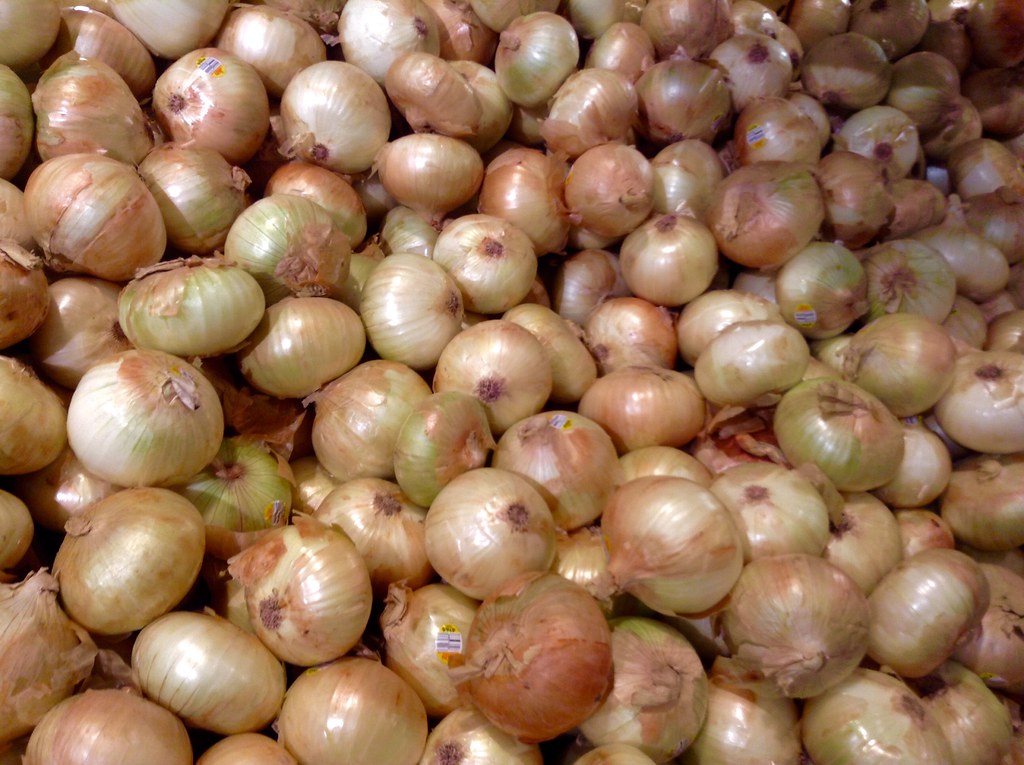
11. **The Root-Intact Onion Dice: Warding Off Tears and Maintaining Control** The act of dicing an onion is a culinary rite of passage, often accompanied by streaming eyes and a frantic search for paper towels. For centuries, home cooks have debated the best methods to minimize the tear-inducing effects of this pungent vegetable, with various theories ranging from chilling the onion to wearing goggles. Gordon Ramsay, however, cuts straight to the core of the problem with a practical tip that not only helps to prevent watery eyes but also makes the dicing process itself far more manageable and precise: leave the root intact.
The reason onions make us cry is the release of sulfur compounds when their cell walls are ruptured. Ramsay’s advice hinges on understanding the onion’s anatomy. The root end is where many of these irritant-producing compounds are most concentrated. By keeping the root end intact, you essentially create a natural handle and a contained structure. This not only prevents the full release of the onion’s potent juices into the air, thus minimizing the irritating fumes that reach your eyes, but it also provides a stable base for dicing.
This technique offers a dual advantage for the home cook. Firstly, by leaving the root attached, you significantly reduce the activation of the chemical defense mechanism that causes tears, making the dicing experience much more comfortable. Secondly, and equally important, the intact root holds the onion halves together, allowing for cleaner, more consistent cuts. You can make precise horizontal and vertical incisions without the onion falling apart prematurely, ensuring uniform dice that cook evenly and present beautifully. It’s a simple, elegant solution that transforms a dreaded kitchen task into a far more controlled and less tearful endeavor.

12. **Oiling Your Pasta Water: A Divisive But Effective Trick?** The world of pasta is rich with tradition, strong opinions, and deeply ingrained culinary rules, particularly when it comes to Italian cooking. So, when Gordon Ramsay, a multi-Michelin-starred chef, advises a technique that flies in the face of conventional Italian wisdom, it’s bound to stir up some debate. His suggestion? To add a generous “big glug of olive oil” into the water when cooking pasta. While this hack has indeed sparked fervent disagreement, Ramsay stands by its efficacy in achieving a superior pasta texture, highlighting a divergence in culinary philosophy.
Ramsay’s rationale for this hotly contested technique is pragmatic: he claims it helps to prevent the pasta from sticking together in the pan and ensures that each strand is evenly cooked. The olive oil, he suggests, creates a slick barrier on the surface of the water, which in turn coats the pasta, inhibiting clumping and allowing the pieces to move freely. This is particularly appealing for home cooks dealing with larger batches of pasta or those looking to minimize the fuss of constantly stirring to separate strands. From a purely functional standpoint, it addresses a common cooking challenge.
However, it’s essential to acknowledge the strong counter-argument, particularly from Italian culinary purists. Many Italians vehemently insist that adding oil to pasta water is not only a waste of precious olive oil but also entirely ineffective, asserting that proper stirring and sufficient water are all that’s needed to prevent sticking. Furthermore, some argue that the oil can prevent the sauce from properly adhering to the pasta later. Despite this debate, Ramsay’s advice remains a notable hack he champions, presenting an intriguing option for home cooks willing to experiment with established norms to achieve a potentially more trouble-free cooking experience, underscoring that even in the most revered culinary traditions, innovation and alternative approaches are always on the table.

13. **The Profound Philosophy of Simplicity: Quality Over Quantity** Beyond individual hacks and techniques, Michelin-starred culinary masters often share a unifying philosophy that elevates their craft: the profound embrace of simplicity. For many, fine dining conjures images of extravagant ingredients and complex, multi-component dishes. Yet, as exemplified by Massimo Bottura’s renowned “Oops! I Dropped the Lemon Tart,” which wasn’t a mistake but a deliberate act of artistic reinvention, the true secret often lies not in complexity, but in intentional, refined simplicity. This is the cornerstone of transforming the ordinary into the extraordinary, a principle deeply accessible to every home chef.
The widespread myth of complexity in fine dining is elegantly debunked by chefs like René Redzepi of Noma, who transforms foraged herbs into masterpieces, or Alain Passard, who elevates humble, homegrown vegetables to star status on his plates. Their menus are not built on exotic imports but on the purest expression of locally sourced, seasonal ingredients. These culinary luminaries demonstrate that true excellence doesn’t require a limitless budget or an arsenal of obscure tools; instead, it demands a deep respect for the ingredient itself, allowing its inherent qualities to shine.
This core tenet, “Quality Over Quantity,” serves as the unshakeable foundation for truly exceptional cooking. It champions the belief that a perfectly ripened tomato, bursting with natural sweetness, or a batch of freshly made pasta, crafted with care, can effortlessly outshine the most elaborate sauces concocted from mediocre components. For the home cook, this means prioritizing the best possible ingredients your budget allows, understanding that the inherent quality of your raw materials is non-negotiable and will fundamentally dictate the deliciousness of your final dish. It liberates you from the pressure of over-complicating meals, encouraging a focus on the innate beauty and flavor of fewer, superior components.
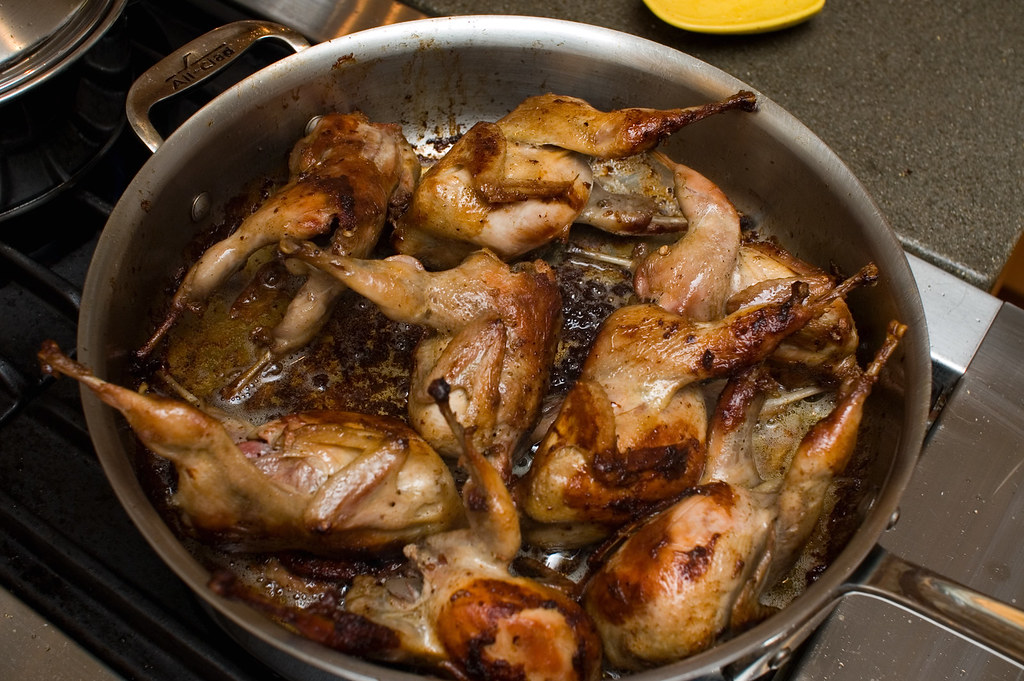
14. **Mastering the Essentials: Salt, Acid, and Heat Management** Building upon the philosophy of simplicity, Michelin-starred chefs repeatedly emphasize that even the most seemingly basic dishes rely on an unwavering “Mastery of Technique.” It’s not enough to have high-quality ingredients; the art lies in knowing precisely how to handle them, how to coax out their finest flavors, and how to perfect their textures. This mastery, far from being esoteric, often boils down to a few fundamental principles that every home cook can, and should, meticulously cultivate.
Central to this mastery are two pillars of flavor balance: salt and acid. Proper seasoning isn’t just about making food taste salty; it’s about awakening and harmonizing all the existing flavors within a dish, making them sing in perfect chorus. Similarly, judicious use of acid—a squeeze of lemon, a splash of vinegar—can brighten, cut through richness, and add a crucial layer of complexity that elevates a meal from merely good to truly memorable. These are not additions but integral components of the flavor profile, demanding careful attention and a trained palate.
Equally vital is impeccable heat management. The difference between a perfectly seared scallop with a golden crust and a rubbery, grey specimen often lies solely in the chef’s command of temperature. Knowing when to apply intense heat for caramelization, when to gently simmer for tenderness, or when to gradually bring an ingredient to temperature (as in Ramsay’s cold potato start) can profoundly alter the texture, taste, and overall success of a dish. These foundational techniques, mastered through practice and intention, are the silent architects of Michelin-level excellence, proving that the most powerful culinary tools are often those wielded with precision and understanding.

15. **Elevating the Experience: Intentional Plating and Texture Play** The journey of culinary excellence, even through the lens of simplicity, culminates in the experience itself. Michelin-starred chefs understand that dining is a multi-sensory affair, and this extends far beyond taste. The final elements that transform a simple meal into an unforgettable occasion are “Intentional Presentation” and a thoughtful “Play with Texture,” components that are entirely within the grasp of the home cook dedicated to elevating their craft. This thoughtful attention to detail ensures that every dish, no matter how humble, is perceived as a work of art.
Intentional presentation doesn’t demand elaborate garnishes or intricate arrangements; often, it’s about mindful restraint and enhancing natural beauty. A simple drizzle of your finest extra-virgin olive oil, a sprinkle of flaky sea salt, or a scattering of fresh herbs can transform the visual and aromatic appeal of even the most straightforward dish. It’s about creating a sense of anticipation and respect for the food, guiding the diner’s eye, and preparing their palate for the flavors to come. This attention to detail communicates care and elevates the perceived value of the meal, making it feel special.
Complementing visual appeal is the deliberate “Play with Texture.” Michelin chefs masterfully combine crunchy, creamy, and tender elements on a single plate to create a dynamic and engaging sensory experience. Think of the satisfying crunch of a perfectly roasted vegetable alongside a silky purée, or the crisp exterior of a seared protein giving way to a succulent interior. This interplay of textures adds depth, intrigue, and a delightful contrast that keeps the palate engaged and makes each bite more exciting. It’s an often-overlooked dimension that can profoundly impact enjoyment, turning a mere meal into a captivating culinary journey.
By embracing these surprisingly simple yet profoundly impactful hacks, from precise ingredient handling to the overarching philosophy of simplicity, home cooks can truly unlock their culinary potential. The wisdom shared by these Michelin-starred masters isn’t about unattainable luxury; it’s about intentionality, quality, and a deep understanding of food. When you approach your kitchen with this blend of passion and precision, every meal becomes an opportunity for delicious creation, a testament to the fact that with the right knowledge, professional excellence is truly within reach. This weekend, dare to refine, elevate, and honor the ingredients you use, and you might just discover the Michelin magic in your own culinary endeavors, proving that perfection often isn’t when there’s nothing left to add, but when there’s nothing left to take away.



